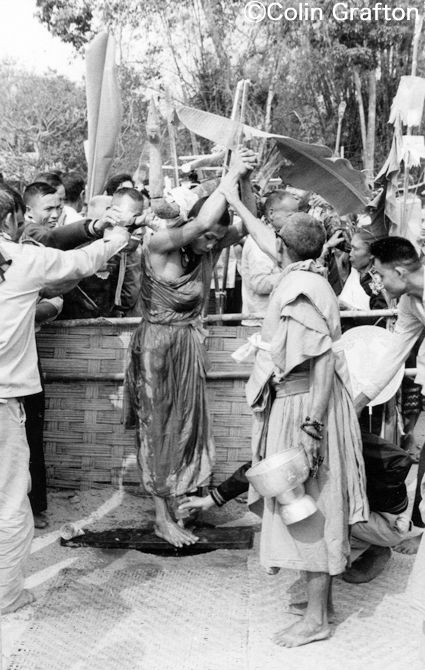










Phon Hong
Click image to view
Phon Hong was the first major village on the Luang Prabang road, 62kms north of Vientiane. At a village 10 kms north of Phon Hong (perhaps Ban Keng Kang) , I chanced upon a monk’s ordination ceremony, and a mock wrestling match performed by a couple of drunken ‘fighters’. The khene (bamboo pipes) player may have been in the same village, but the last two photos were taken three years later, in 1975. The man recording the music was Paul Cravath, author of “Earth In Flower”. As we were listening, the Khmer Rouge had just taken Phnom Penh.
The khene, with its origins in the distant past, is the venerable ancestor of the harmonica, which was invented in the 19th century. Both have metal reeds that produce sound both on blowing and on breathing in. I had a khene and tried to play it, but I was hopeless. The khene evolved in China into a far more sophisticated instrument, the sheng. It lost its guts. By the time it arrived in Japan (which was over a thousand years ago) in the form of the shō, it had become an ethereal drone instrument (in ancient gagaku music), far removed from the khene. The rhythmic way it is played in Laos, especially in molam music, is stunning. One of my favourite khene tunes is “Lot Fai Tai Lang” (The Train Goes Down The Track”), a tour-de-force that leaves Cream’s “Train Time” in the dust. As noted earlier, there were no real trains in Laos.